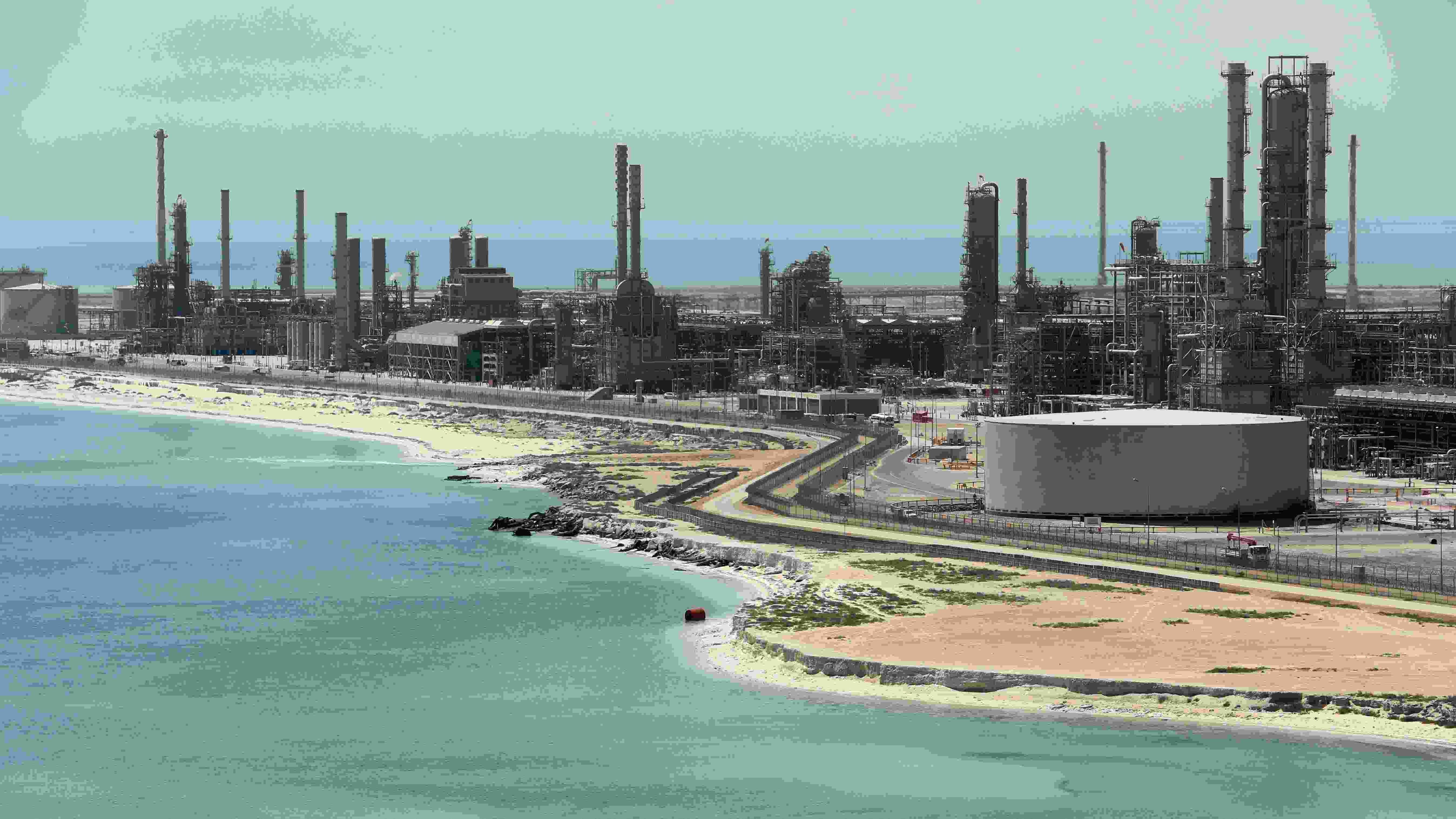
Saudi Arabia's Crown Prince Mohammed bin Salman uses his phone in Riyadh, Saudi Arabia, January 12, 2020. /Reuters Photo
Editor's note: Hannan Hussain is a security analyst at the South Asia Centre of London School of Economics and an author. The article reflects the author's opinions, not necessarily the views of CGTN.
Saudi Crown Prince Mohammed bin Salman's desire to diversify his country's oil-dependent economy is nearing its fifth year. The plan, floated in 2016 as the Vision 2030 reform package, is aimed at opening up Saudi Arabia to private sector contributions – mostly non-oil revenues – and promoting equal opportunity for citizens under "wide-ranging transparency" measures.
Not only is this transformation holding back, it has prompted astronomical government spending this year and effected limited socioeconomic mobility among Saudi women – a key focus of the reforms. Vision 2030 is also Riyadh's newest political tool to further geopolitical rivalries in the Middle East. All of these arrive at the expense of making Saudi Arabia the "gateway to the world."
Maximizing the private sector's contributions to total revenue output means understanding its most central resource: expatriate labor. In less than three years, over 1.2 million foreign workers have left the kingdom and their departure is yet to be met by the state with a viable alternative.
In one way, the state's reluctance to act in favor of expatriate labor is motivated by domestic considerations. Prince Mohammed bin Salman has vowed to steer Saudi nationals towards greater private sector employment under Vision 2030. But those same jobs are filled by foreign workers in vast numbers. For the state to put a cap on foreign labor exit means risking the "great employment promise" – a cost the kingdom is not too keen to incur.
Then comes the trouble of information asymmetry. The Saudi regime, known for rarely publishing statistics, has been moving the goalposts on performance evaluation. At the time of Vision 2030's launch, the government claimed 47 percent of Saudis own homes – a 17 percent exaggeration compared to home ownership figures released by a private investment bank.
Last November, a government-led macroeconomic bulletin claimed a "notable uptick in the non-oil private sector growth." Published figures by the Saudi Arabian Monetary Authority (SAMA) held this conclusion in dispute: oil exports alone topped non-oil export revenue by more than 300 percent.

An oil facility near al-Khurj area, outside the Saudi capital of Riyadh, September 15, 2019. /VCG Photo
Interestingly, the politicization of Vision 2030 raises questions about its domestic credibility. In January, Riyadh's Deputy Minister of Defense Prince Khalid bin Salman took shots at Tehran, claiming its Vision 1979 was an obstacle to Saudi 2030 reforms, and is detrimental to regional progression. "We have a forward-looking vision to improve our economy, to make our peoples' lives better in the Kingdom," said Mr Salman in an interview with VICE Media. "Iran wants to do the opposite. Iran has expansionist policies."
Clearly, the Saudi regime seems to overestimate Vision 2030's own regional outreach, and the downsides to hostile narrative building. In terms of the former, campaigns for foreign investment have been pursued with great enthusiasm outside the Gulf, most notably on the Prince's Asia tour last February. Deals worth billions were signed with Beijing and Islamabad, ramping-up prospective investment for Vision 2030.
But within the Gulf, Riyadh's spending spree from one conflict to the other keeps putting domestic reform targets on the back-burner. For instance, the stalemated war in Yemen alone is estimated to cost Riyadh at least 25 billion U.S. dollars annually.
Additionally, the nuclear angle to Riyadh's domestic energy needs is a bone of contention in the Gulf, especially in the eyes of Washington. "Congress and the Trump Administration are at odds over Saudi Arabia's effort to purchase nuclear power plants to provide its domestic energy needs, leaving its oil available for export," reports Karen Elliott House, senior fellow at the Harvard's Belfer Center and an authority on Saudi politics.
Reform targets for Saudi youth and women also demand greater impetus. The average female participation in the country's higher education institutions continues to rank above Saudi males, but only a fraction of these women manage to secure employment.
Similarly, Vision 2030 aims to further the "youth's integration into the country's private market economy" – a target directly undermined by a thriving public sector. Most Saudi nationals continue to opt for government jobs, where lucrative monthly salaries and job security are important factors. For a budding youth population to take a decision at odds with the wider public is a rather hopeful estimate, let alone a realistic one.
But if Riyadh genuinely wants to affect such market preferences by 2030, it must begin to ensure an annual influx of around two million Saudis into the workforce over the next decade. This is particularly important since the youth bracket (under the age of 30), constitutes more than half of the kingdom's total population. Only an annual influx of two million Saudis can get the 2030 employment target over the line.
In light of these challenges, the best starting point for Riyadh will be to cede some degree of state-control to the non-oil private market. Almost all of Vision 2030's performance evaluation is done through reporting between appointed ministers and the crown prince – lacking validation from the very market sector it seeks to empower.
(If you want to contribute and have specific expertise, please contact us at [email protected])
 简体中文
简体中文

